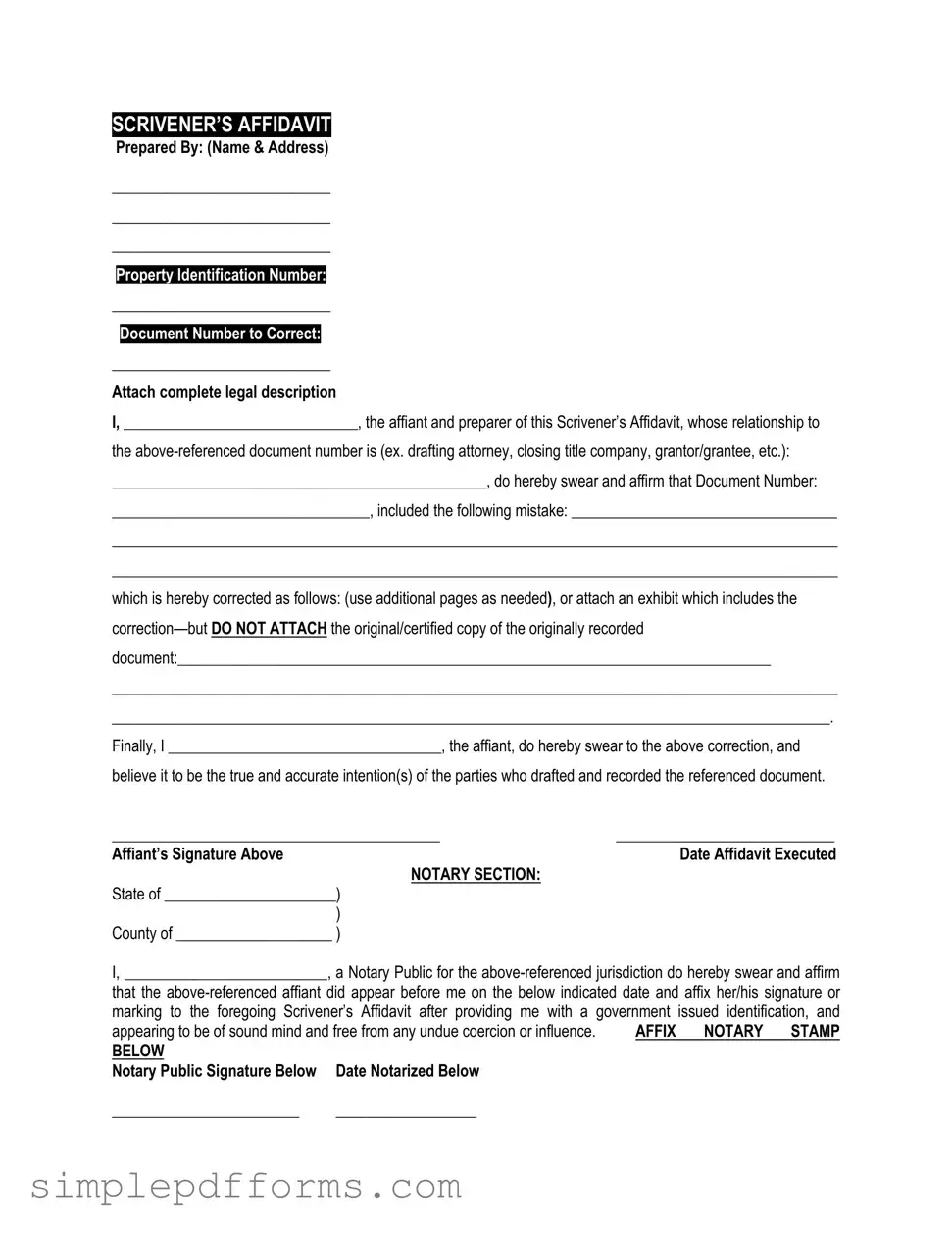SCRIVENER’S AFFIDAVIT
Prepared By: (Name & Address)
____________________________
____________________________
____________________________
Property Identification Number:
____________________________
Document Number to Correct:
____________________________
Attach complete legal description
I, ______________________________, the affiant and preparer of this Scrivener’s Affidavit, whose relationship to
the above-referenced document number is (ex. drafting attorney, closing title company, grantor/grantee, etc.):
________________________________________________, do hereby swear and affirm that Document Number:
_________________________________, included the following mistake: __________________________________
_____________________________________________________________________________________________
_____________________________________________________________________________________________
which is hereby corrected as follows: (use additional pages as needed), or attach an exhibit which includes the correction—but DO NOT ATTACH the original/certified copy of the originally recorded document:____________________________________________________________________________
_____________________________________________________________________________________________
____________________________________________________________________________________________.
Finally, I ___________________________________, the affiant, do hereby swear to the above correction, and
believe it to be the true and accurate intention(s) of the parties who drafted and recorded the referenced document.
__________________________________________ |
____________________________ |
Affiant’s Signature Above |
Date Affidavit Executed |
NOTARY SECTION: |
|
State of ______________________) |
|
) |
|
County of ____________________ ) |
|
I, __________________________, a Notary Public for the above-referenced jurisdiction do hereby swear and affirm
that the above-referenced affiant did appear before me on the below indicated date and affix her/his signature or marking to the foregoing Scrivener’s Affidavit after providing me with a government issued identification, and
appearing to be of sound mind and free from any undue coercion or influence. |
AFFIX |
NOTARY |
STAMP |
BELOW |
|
|
|
|
Notary Public Signature Below |
Date Notarized Below |
|
|
|
________________________ |
__________________ |
|
|
|
